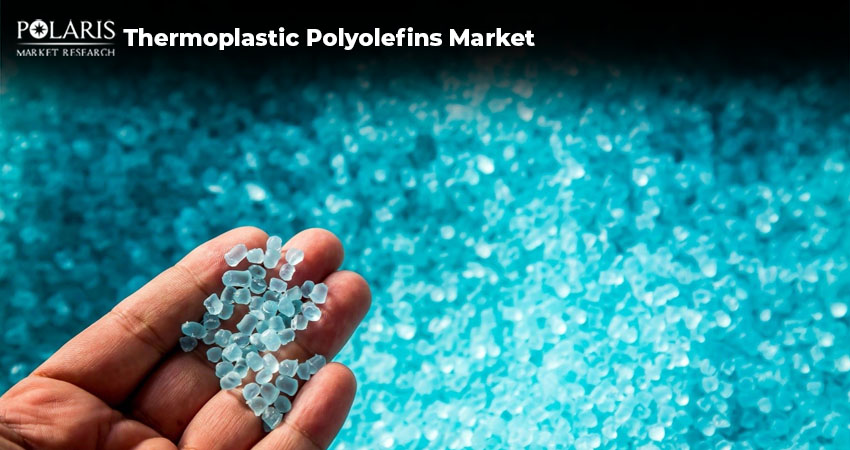Creating Lightweight and Durable Materials with Thermoplastic Polyolefins

In a world constantly seeking materials that are both high-performing and environmentally conscious, a quiet revolution has been brewing in the realm of plastics. Enter thermoplastic polyolefins (TPOs), the unspoken workhorses behind everything from the stylish interior of vehicles to the resilient roof membrane that protects homes. Being a subtype of thermoplastic elastomers (TPEs), TPOs combine the best of plastics and rubbers.
With increasing demand for sustainable materials, TPOs are gaining traction due to their recyclability, lightweight nature, and cost-effectiveness. So, what exactly makes these multi-purpose materials so popular? Let’s dive into the fascinating world of TPOs in this blog.
What Are TPOs?
TPOs are a type of thermoplastic elastomer, specifically blends of polyolefins (like polypropylene or polyethylene) with elastomers, often with fillers. This blend creates a material with enhanced impact resistance, chemical resistance, and overall mechanical properties compared to standard polyolefins. Unlike thermoset polymers, TPOs can be melted and reshaped multiple times without losing their properties, making them highly recyclable.
TPOs has witnessed increased demand in the healthcare and pharmaceutical sectors in recent years. The global thermoplastic polyolefins (TPOs) market was evaluated to be worth USD 4.57 billion in 2021. It is expected to reach a value of USD 8.01 billion by 2030, exhibiting a CAGR of 6.5% from 2022 to 2030.
Why TPOs Are Gaining Increased Traction?
Lightweight and Durable: TPOs are favored for their ability to reduce vehicle weight, enhancing fuel efficiency and reducing emissions. The lightweight nature of TPO makes it easier and quicker to install compared to heavier materials, reducing labor costs and project time. They also offer good strength and resistance to various environmental conditions.
Versatility and Manufacturability: TPOs offer significant versatility and manufacturability due to their blend of properties, ease of processing, and ability to be customized. They can be easily molded and processed, making them suitable for a wide range of applications, including automotive components, construction materials, and packaging.
Major TPO Producers Globally
Here’s a look at the top companies offering TPOs for various applications:
-
LyondellBasell Industries: A global leader in polyolefin production, LyondellBasell offers a diverse range of TPO compounds known for high performance in automotive and industrial applications.
-
ExxonMobil Chemical: ExxonMobil Chemical plays a significant role in the thermoplastic polyolefin market by offering a variety of products, including "Exxtral" Performance Polyolefins and Vistamaxx performance polymers.
-
SABIC: SABIC, a Saudi-based company, provides engineered TPO compounds for injection molding, extrusion, and automotive interiors. Additionally, it actively develops and provides materials that can be used in the production of TPOs.
-
Mitsui Chemicals, Inc.: Mitsui is a Japanese chemical company that manufactures and sells a variety of materials, including TP. Mitsui's TAFMER™ series offers high-performance TPOs and elastomer-modified polyolefins, particularly for automotive and packaging uses.
TPO Applications Across Industries
Automotive Industry
The automotive industry is shifting towards increased use of TPO due to durability, recyclability, and automotive lightweight materials which contribute to fuel efficiency and reduced emissions. TPO is being adopted for various automotive components, including bumpers, interior materials, and exterior body panels, replacing heavier materials such as metals. The ability of TPO to be formed into complex shapes makes it a suitable material for a wide range of automotive applications.
Construction Industry
The construction industry is seeing significant growth in the use of TPOs due to their weather resistance, durability, and recyclability. TPOs are also being increasingly used in waterproofing membranes for buildings, promoting energy efficiency and durability. They are increasingly being used in the construction industry due to:
- Energy efficiency (reflects sunlight, reducing cooling costs)
- Long lifespan (20-30 years)
- Resistance to punctures and tears
Consumer Goods and Other Applications
(TPOs find applications in packaging for food, electronics, and other consumer goods. In packaging, they are used for films, containers, bottles, bags, and more. Certain TPOs are used in medical devices, syringes, and packaging. They are also used in the manufacturing of toys and outdoor play equipment for their resilience and durability. They can be used in the manufacturing of household appliances, such as kitchen appliances and furniture. Thanks to their flexibility and higher strength, they found use in the production of sportswear and related items.
Emerging Trends in TPOs
-
Bio-based TPOs: With the push for green polymers, companies are developing bio-based TPOs using renewable resources like bio-polyethylene and bio-based polypropylene. This push has gained significant traction owing to increasing sustainability concerns and the need for materials with reduced environmental impact. Bio-based TPO offers a path to reduce reliance on fossil fuels and align with the growing consumer demand for environmentally friendly products.
-
Enhanced TPO Compounds: The trend for enhanced TPO compounds is driven by increasing demands for lightweight, durable, and sustainable materials, particularly in the automotive and construction industries. Advancements in nanomaterial components and additive technologies are creating TPOs with higher thermal resistance, flame retardancy, and electrical conductivity for electric vehicles (EVs) and electronics.
-
3D Printing with Thermoplastic Olefins: The use of 3D printing with TPO materials is witnessing a greater adoption across several industries due to its adaptability, affordability, and capability to construct complex shapes. This incorporates higher use within the automotive, aerospace, and healthcare sectors. In addition, novel TPO compounds and 3D printing methodologies are broadening the scope of applications and enhancing the quality of parts printed in 3D.
To Sum It Up
Thermoplastic polyolefins are more than just another type of plastic. They represent a smart and versatile material solution that addresses the growing demands for performance, durability, and sustainability across a wide range of industries. TPOs' recyclability, adaptability, and cost-effectiveness position them as a crucial material for the present and a cornerstone of a more sustainable future. As technology advances and the focus on circular economy principles intensifies, we can expect to see even more innovative applications of these unsung heroes of modern materials.

